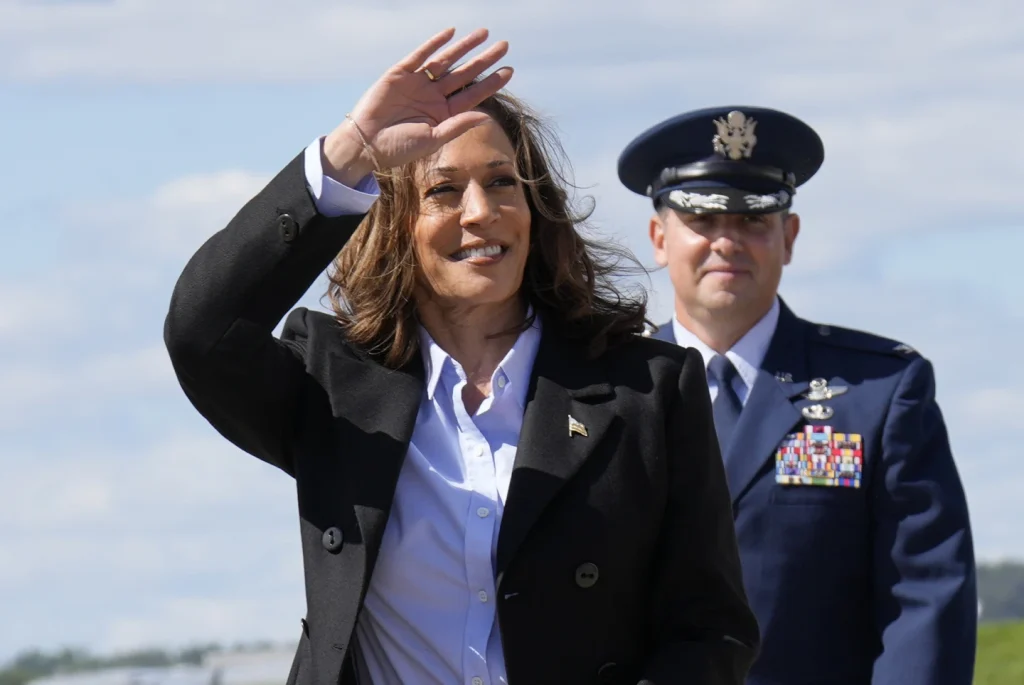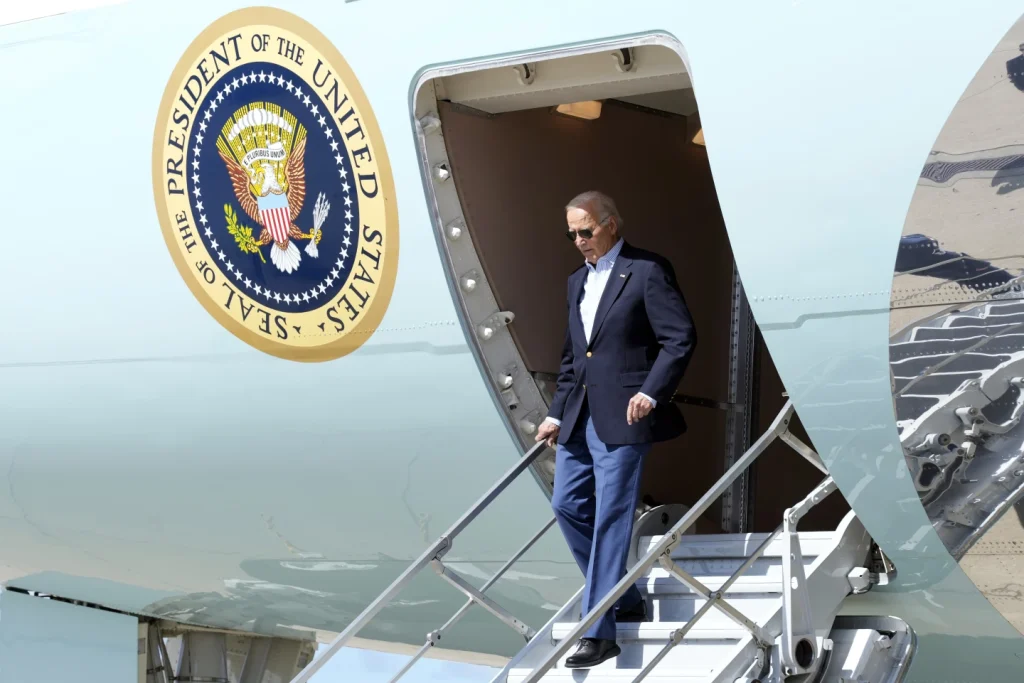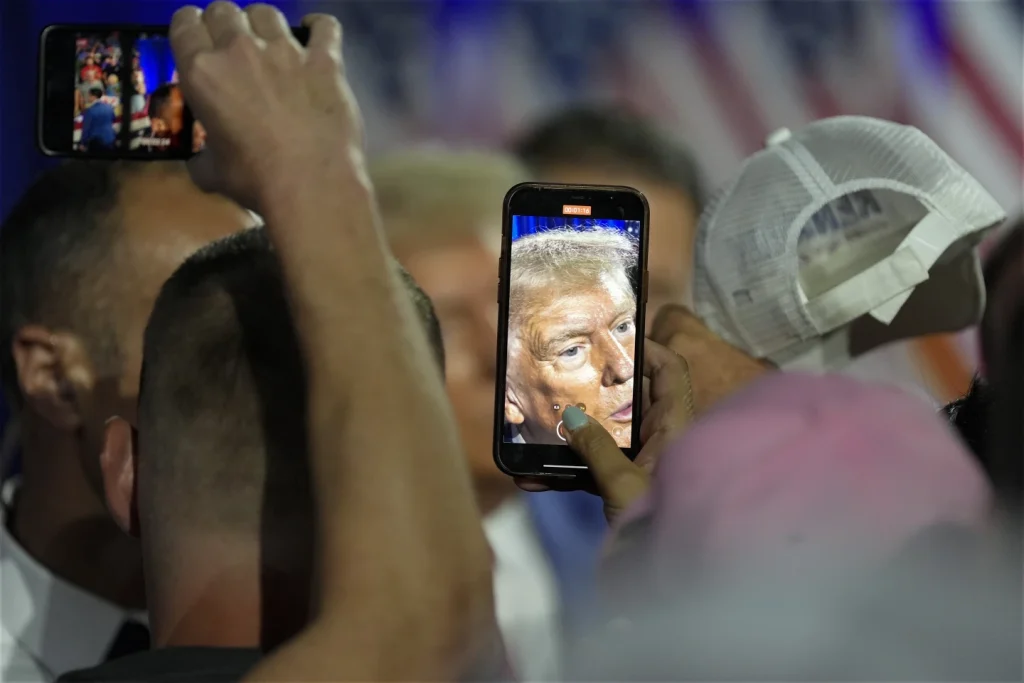As the United States approaches the culmination of a pivotal electoral cycle, the political landscape delineating the presidential race between Vice President Kamala Harris and former President Donald Trump becomes increasingly pronounced.
Following a summer marked by unprecedented political upheaval, both candidates appear to have narrowed their focus to a select group of battleground states that will likely determine the trajectory of the nation for the next four years.
As Democratic and Republican campaigns mobilize their resources, the emphasis converges on several critical issues: the economy, immigration, and abortion—topics that resonate deeply with voters and have far-reaching implications for American society.
With the Democratic Party’s shifting dynamics, particularly in light of President Joe Biden’s decision not to pursue reelection, Harris finds herself at the helm of a campaign characterized by a combination of optimism and trepidation.
The electoral map, as analyzed by both camps, now points to seven states—Pennsylvania, Michigan, Wisconsin, Arizona, Georgia, Nevada, and North Carolina—that are seen as essential battlegrounds, essential for securing the necessary 270 electoral votes required for victory.
Each state holds unique demographic and political characteristics, making them pivotal arenas for the candidates’ strategies.
In the weeks leading up to the election, both campaigns have recognized that the broadened political landscape requires a laser-like focus. With less than three months until Election Day, Harris and Trump intend to invest substantial resources—both financial and human—into these critical battlegrounds.
The early voting timeline adds urgency, with in-person absentee voting set to commence in Pennsylvania immediately following their inaugural debate.
This heightened importance of voter turnout necessitates not just well-crafted messages but also direct engagement with communities that feel overlooked or ignored.
As the Harris campaign mobilizes its efforts, it finds itself attempting to reinvigorate the Democratic base, particularly among African American and Latino voters in the aforementioned Sun Belt states.
Polling data suggests that these demographics, which had grown disenchanted with President Biden’s leadership, express renewed enthusiasm for Harris.
Her team has signaled confidence that, if they can ensure robust turnout among these groups, particularly in states like North Carolina, they may shift the electoral balance in their favor.
As noted by Republican pollster Paul Schumaker, an uptick in Black voter turnout can dramatically alter electoral outcomes, particularly in regions where communities of color achieve parity in engagement with their white counterparts.
Conversely, Trump’s campaign continues to maintain significant influence in the Midwest, focusing heavily on states like Michigan, Wisconsin, and Pennsylvania—regions that traditionally constitute the Democratic Party’s “blue wall.”
Trump’s political calculus recognizes that, following his historic victories there in 2016 and his narrow defeats in 2020, these states continue to be vital to his path to reclaiming the presidency. The recent shifts in voter sentiment, especially among independent voters swayed by economic and social grievances, compel him to sharpen his appeals in these areas.
The thematic focus of both campaigns centers around three critical issues: the economy, immigration, and abortion—each a topic that stirs profound emotions and convictions among voters.
Despite the broader national discourse grappling with issues such as character, cultural divisions, and democratic integrity, candidates are compelled to frame their narratives around these high-stakes matters.
For Harris, articulating a coherent message on economic recovery and social justice is paramount. In contrast, Trump continues to leverage a populist message that resonates with voters concerned about their economic prospects and national security.
In this context, the impending debate between Harris and Trump represents a significant moment for both candidates. As their first direct engagement, it poses an opportunity for each to clarify their positions and assert their leadership credentials.
The stakes are exceedingly high, not only for the candidates but for the nation, as the electoral machinery prepares to engage a populace that, while historically disengaged, is now at a precipice of potential political activism.
Both campaigns signal an acute awareness of the shifting attitudes of the American electorate. As James Blair, Trump’s political director, notes, the time approaching Labor Day marks a pivotal moment when voters begin to solidify their opinions. This awareness drives urgency in both campaigns to articulate their messages clearly and emphatically.
The significance of the voters’ emotional landscape cannot be overstated in the remaining weeks. The anticipation ahead of the debate may catalyze discussions about governance, citizenship, and national identity that will resonate beyond mere campaign slogans.
Given the polarized political climate, the ability of either candidate to engage with these complexities—while appealing to their core supporters and attempting to win over undecided voters—will directly influence their chances at the polls.
A potential victory for Donald Trump in Pennsylvania could significantly complicate Vice President Kamala Harris’s quest for the requisite 270 electoral votes necessary to secure the presidency.
Despite Harris’s assertion that her campaign possesses multiple avenues towards a triumphant outcome, the dynamics of electoral strategy heavily favor the Democratic Party in critical battleground states.
Currently, the Harris campaign, alongside allied super PACs, is poised to outspend Trump’s campaign by a substantial margin of two to one in television advertising over the forthcoming two months.
Specifically, the Harris coalition has reserved over $280 million for television and radio advertisements in the final stretch leading up to Election Day, a figure starkly contrasted by Trump’s approximate $133 million in reservations, which, while anticipated to increase, remains significantly lower.
Notably, both campaigns are engaging in a fierce contest over the airwaves in Pennsylvania, where ad spending is expected to exceed $146 million each, marking it as the most prolific battleground in the current election cycle.

Conversely, in five other pivotal states—Michigan, Arizona, Wisconsin, North Carolina, and Nevada—Harris enjoys a dominant presence, having earmarked no less than $21 million in each state, whereas Trump’s campaign has made only minimal advertising in these regions.
Additionally, the organizational might of Harris’s campaign is underscored by the establishment of over 300 coordinated offices and an extensive ground operation that includes approximately 2,000 personnel in swing states.
In striking contrast, Trump’s campaign appears to be relying heavily on a few dozen dedicated offices and less experienced external groups to mobilize voters. Despite claims by Trump’s political director, Blair, that the Democrats’ organizational edge may not be as pronounced as suggested by reports, the overall trend reflects an uphill battle for Trump’s side.
Polling data reveals an intensely competitive landscape across the seven primary swing states, with Democratic pollster John Anzalone noting that the race is essentially a toss-up.
Both candidates face the arduous task of appealing to a narrow band of independent and swing voters, a demographic that remains largely dissatisfied with both options as indicated by recent polling.
For Harris, initial indicators suggest a slight edge in perceptions regarding traits such as honesty and commitment to democracy among independents.
However, as the electoral narrative unfolds, the effectiveness of each candidate’s portrayal as the “change candidate”—critical in a climate where nearly seven in ten voters believe the country is veering off course—may determine the ultimate outcome.
Historically, Trump has embodied the archetype of change, mobilizing a significant faction of disillusioned voters; thus, the challenge now lies in whether Harris can successfully reposition herself in the minds of the electorate amid this evolving landscape.

As the final days of the campaign draw nearer, the landscape appears fraught with challenges and opportunities. Both candidates—Kamala Harris and Donald Trump—understand the weight of the moment and the potential implications for the future of American society and governance.
The race is not merely a contest for the presidency; it is a broader conversation about the values and priorities that will shape the nation moving forward.
The electoral focus on just seven states encapsulates the precariousness of the current political environment and solidifies the need for targeted, strategic outreach.
As both candidates prepare to engage with voters amidst national dialogues shaped by urgent social issues, the outcomes of their efforts will undoubtedly echo through history, setting precedents for future electoral contests and the overall health of American democracy.
In just 63 days, as the nation casts its votes, a definitive choice will be made—one that will delineate a vision for the future amidst a backdrop of unprecedented change and turmoil.
